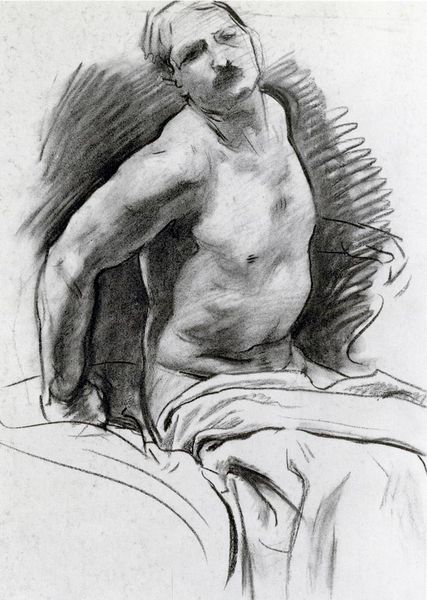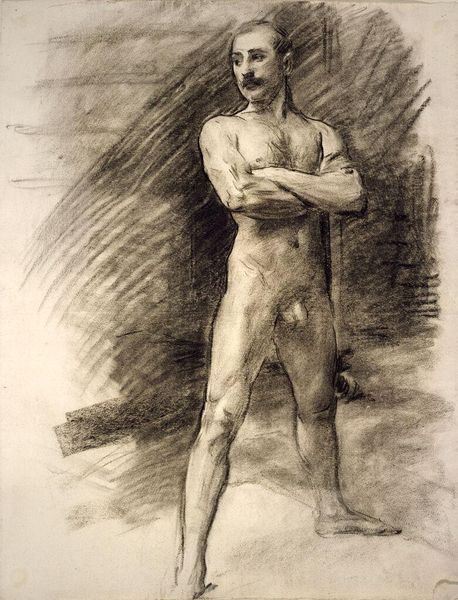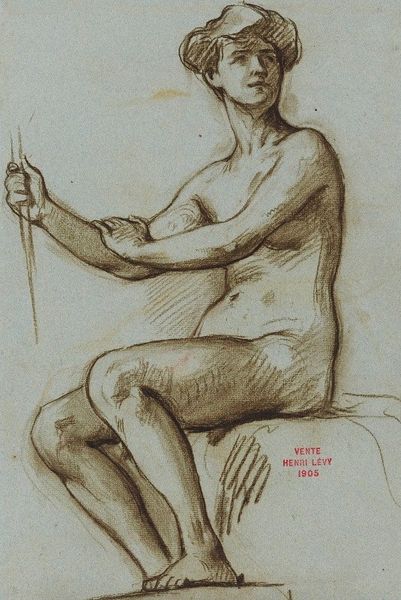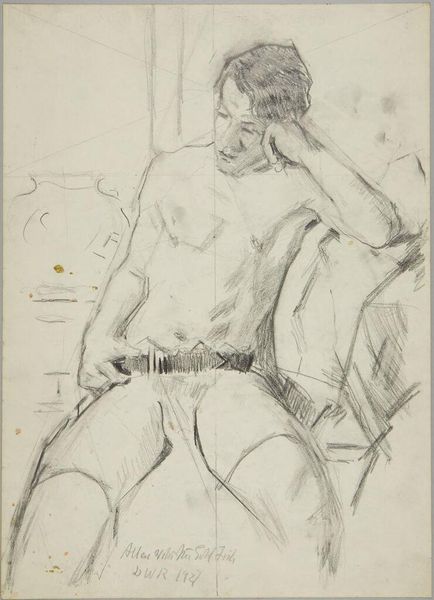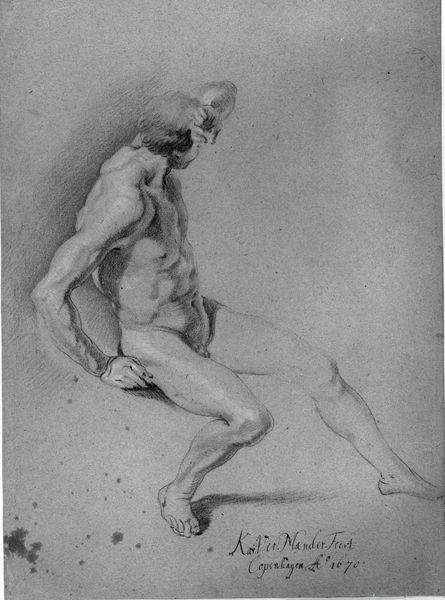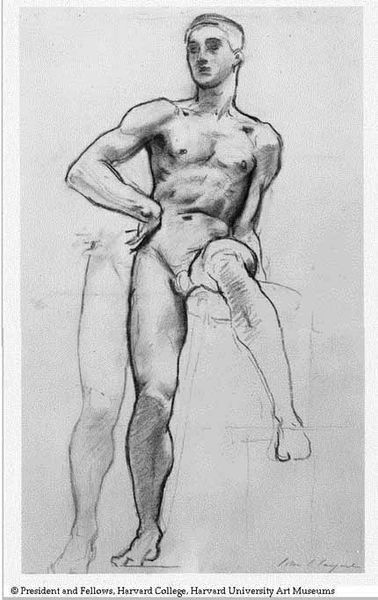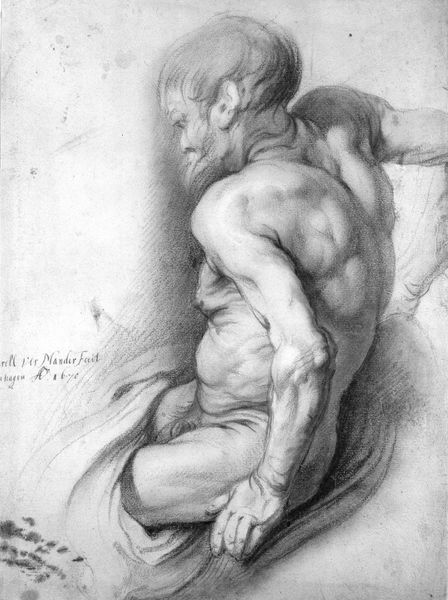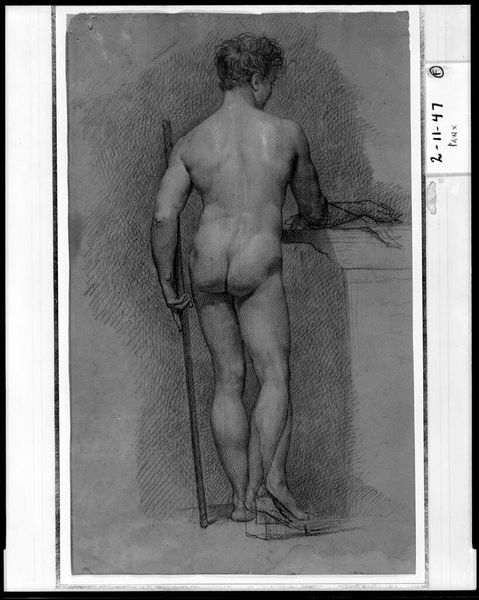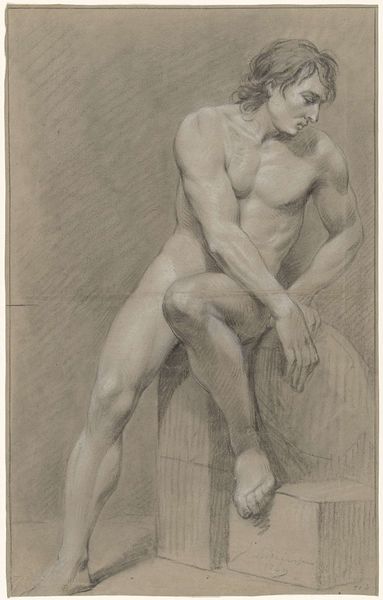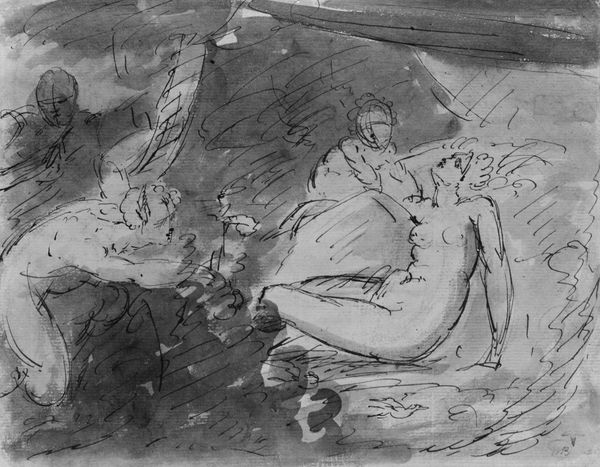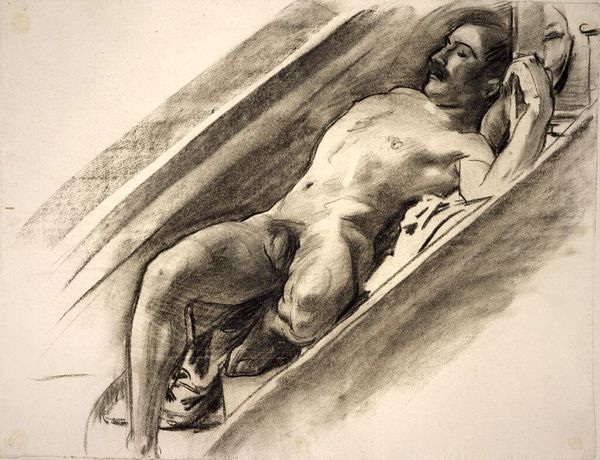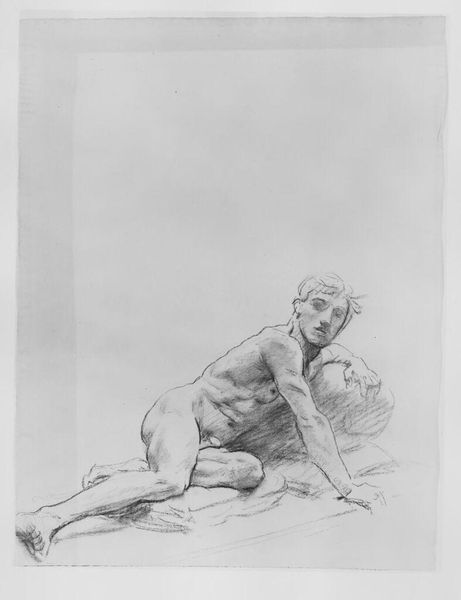
drawing, pencil
#
portrait
#
drawing
#
facial expression drawing
#
pencil sketch
#
charcoal drawing
#
charcoal art
#
portrait reference
#
pencil drawing
#
sketch
#
pencil
#
limited contrast and shading
#
portrait drawing
#
facial study
#
pencil work
#
nude
#
male-nude
#
realism
Copyright: Lucian Freud,Fair Use
Curator: Lucian Freud's 1986 drawing, simply titled "Man Posing," captures the male figure with striking intensity using pencil. It's… surprisingly vulnerable, don’t you think? Editor: The cross-hatching lends it that quality, doesn't it? The repeated, almost frantic strokes suggest not vulnerability, per se, but immediacy, a recording of observation—a structural accounting of light and form. The man's relaxed posture in the armchair almost disappears amid the linework. Curator: Yet that very tension, the casualness juxtaposed with the unforgiving scrutiny of the gaze, hints at larger issues surrounding male identity, doesn’t it? Especially considering Freud’s tendency to paint those in his close social circles. There's a certain power dynamic present when looking at a nude—male or otherwise—made all the more poignant by the way this sitter seems unaware of it. Editor: I see your point, particularly the contrast between the relaxed pose and the meticulous technique, the lack of shading beyond cross-hatching. The effect of all these small repeated lines emphasizes the surface, the visible construction of the figure. It creates an interesting semiotic relationship, calling to mind the raw materiality of the process. Curator: Absolutely. One might see parallels here to the deconstruction of traditional masculinity evident in feminist critiques of the time. To show a man at ease, exposed in this way—divested of any symbolic markers of power—it becomes a study in what Judith Butler called the performativity of gender, a disruption of expected narratives. Editor: Or perhaps, quite simply, an interrogation of volume through value, creating shape where one would expect more gradient shading. There is a simplicity to the technique here. Even in the background and on the armchair there is repetition. In focusing solely on outline and the effect it has as it builds form, meaning can get confused. Curator: True. The reduction allows the raw humanity of the sitter to speak for itself, devoid of romanticization. Which perhaps also speaks to our modern obsession with unflinching self-representation. Editor: Ultimately, it comes down to Freud's formal mastery of pencil. A compelling and somewhat detached analysis, offering little beyond that which we see at first glance. Curator: For me, it becomes a conversation about visibility, challenging preconceived notions about vulnerability and portraiture. A potent example of how identity intersects with artistic representation.
Comments
No comments
Be the first to comment and join the conversation on the ultimate creative platform.
